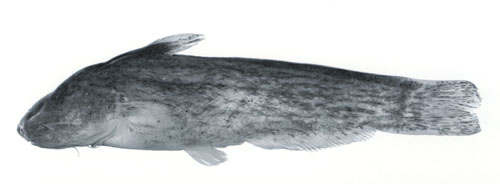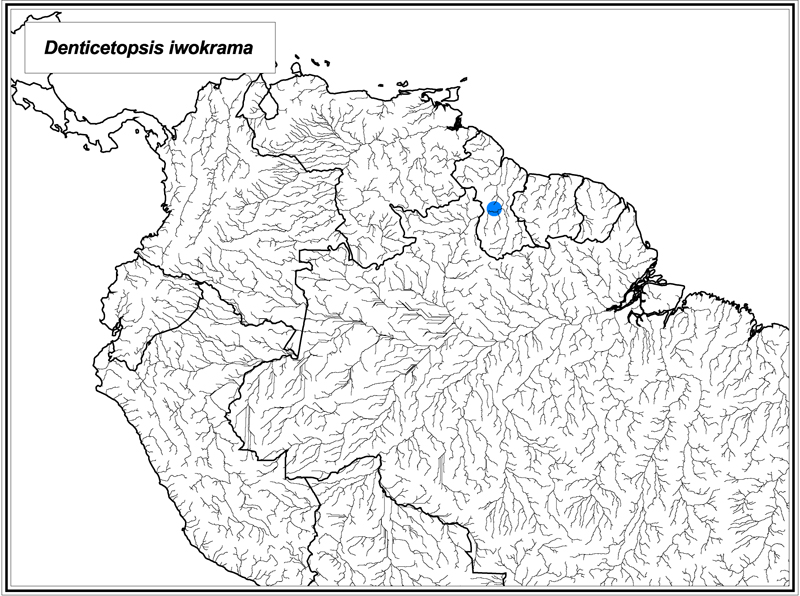
Reproduced from Vari, Ferraris and de Pinna (2005).
Denticetopsis iwokrama Vari, Ferraris & de Pinna, 2005
Identification: Denticetopsis iwokrama can be differentiated from D. royeroi and D. sauli by the combination of the lack of elongate, symphyseal teeth on the dentary, the possession of a lateral line extending posteriorly beyond the abdomen at least onto the caudal peduncle, the presence of dentition on the vomer, a dorsal fin with 5 or 6 rays and with the first ray which is spinous basally, the symmetrical, shallowly-forked caudal fin, and the possession of horizontally-elongate, stellate, dark chromatophores when the chromatophores are expanded. Denticetopsis iwokrama differs from D. epa in the number of caudal (32 versus 26 to 28, respectively), preanal (17 versus 14 or 15, respectively), and total vertebrae (43 versus 38 to 40, respectively), and in the number of total anal-fin rays (29 versus 25 to 27, respectively). Denticetopsis iwokrama differs from D. macilenta in the number of caudal (32 versus 28 to 30, respectively), preanal (17 versus 14 to 16, respectively), and total vertebrae (43 versus 40 or 41, respectively), the position of the middle of the orbit (located at anterior 0.25 of HL versus 0.18-0.19 of SL, respectively), and in the width of the head as a proportion of the length of the head (head width/HL 0.72 versus 0.77-0.84, respectively). Denticetopsis iwokrama differs from D. praecox in the number of caudal (32 versus 27 to 30, respectively), preanal (17 versus 14 to 15, respectively), and total vertebrae (43 versus 38 to 41, respectively), and in the pigmentation of the caudal fin (without a distinct, pale region in the distal portions of the middle fin rays versus with a pale region in the distal portions of the middle fin rays, respectively). Denticetopsis iwokrama differs from D. seducta in the number of caudal (32 versus 26 to 31, respectively), preanal (17 versus 14 to 17 with 17 in only 1 of 23 specimens, respectively), and total vertebrae (43 versus 39 to 42 with 42 in only 1 of 31 specimens, respectively), and in the pigmentation of the pectoral fin (lightly pigmented versus heavily pigmented, respectively). Maximum size: 43 mm SL.
Range: Denticetopsis iwokrama is only known from the type locality in the Siparuni River basin, Guyana.
Information from Vari, R. P., C. J. Ferraris Jr. & M. C. C. de Pinna. 2005. The Neotropical whale catfishes (Siluriformes: Cetopsidae: Cetopsinae), a revisionary study. Neotropical Ichthyology 3:127-238.
